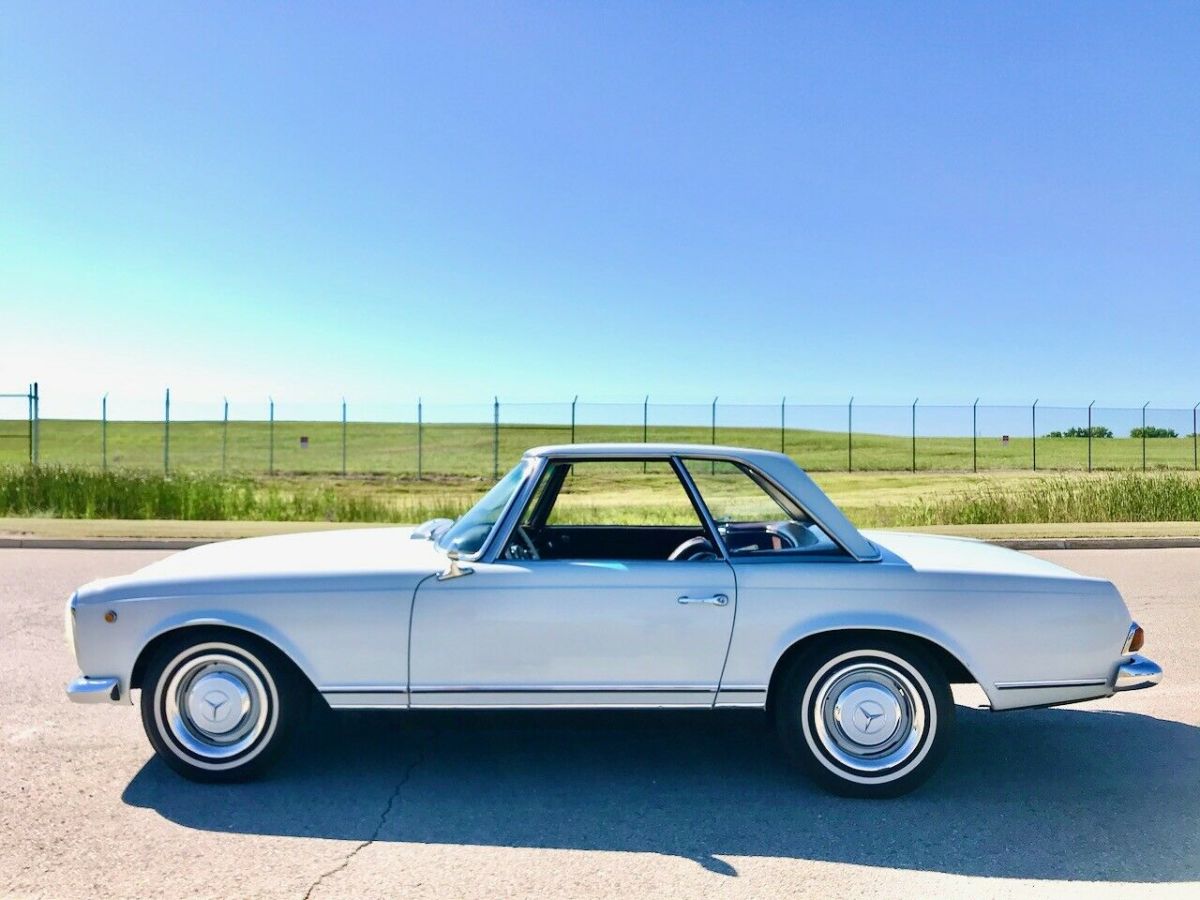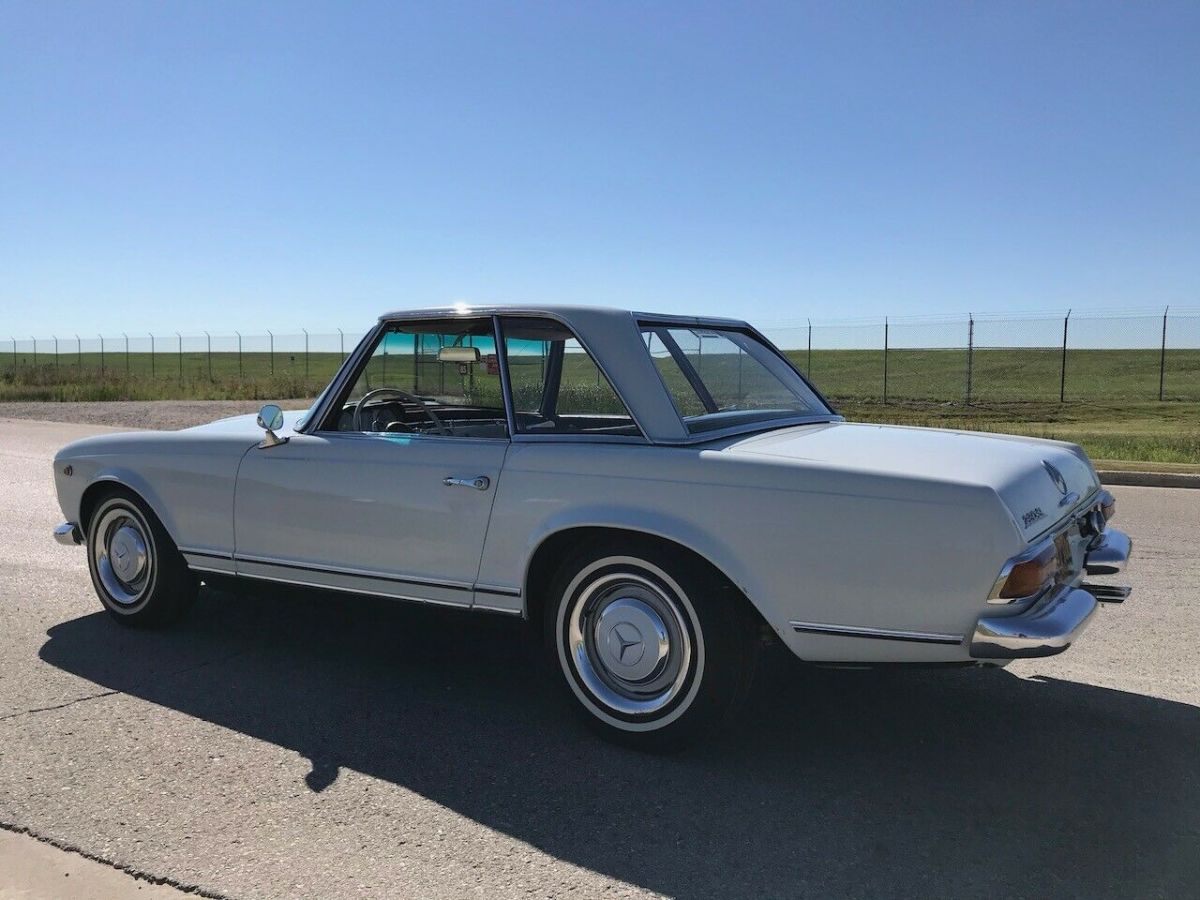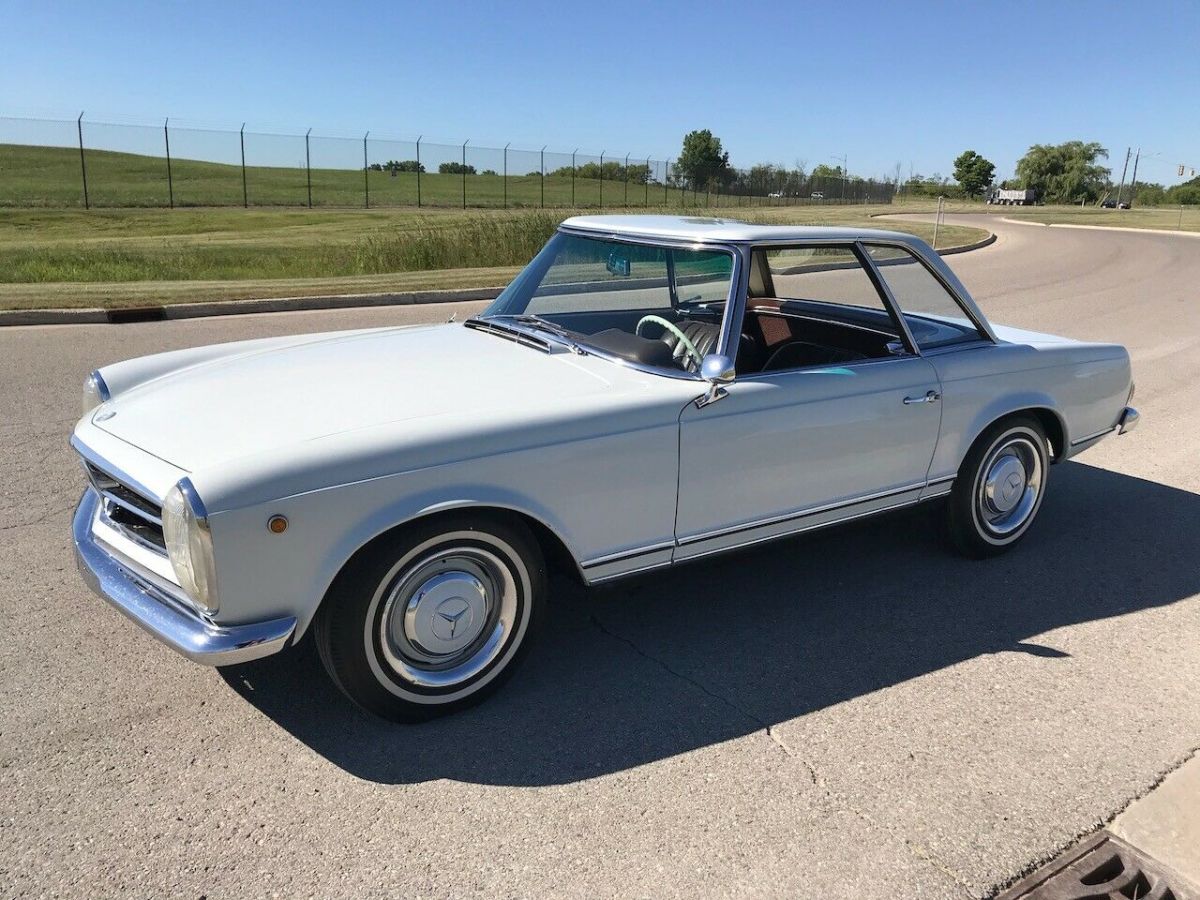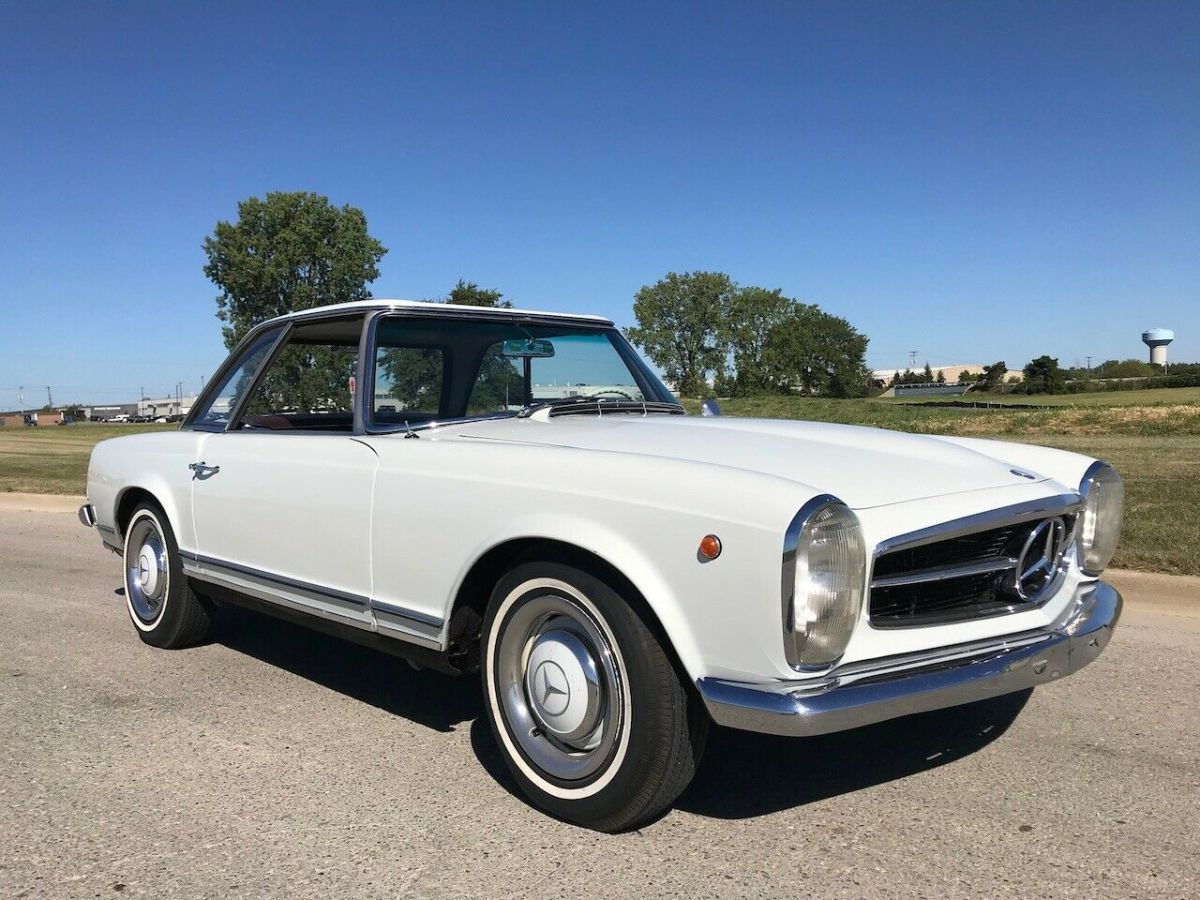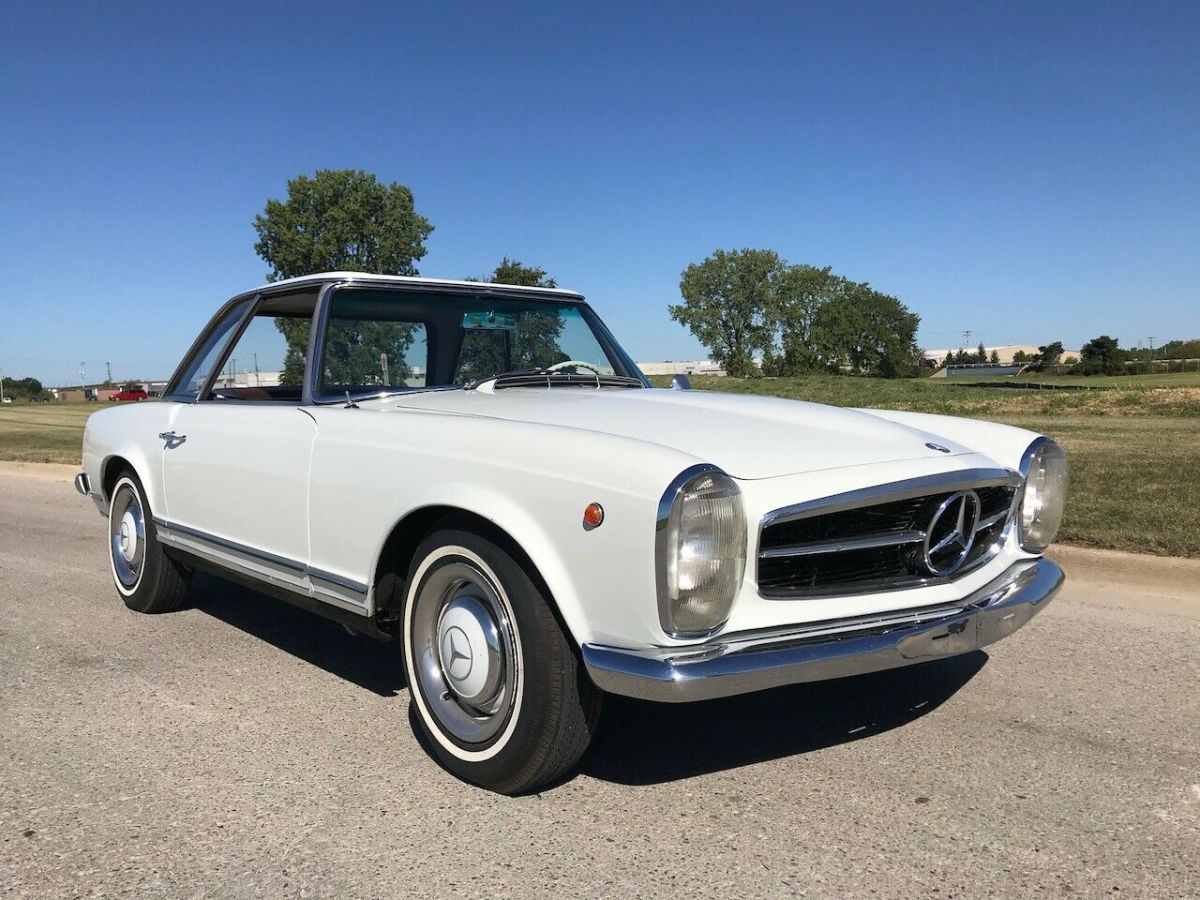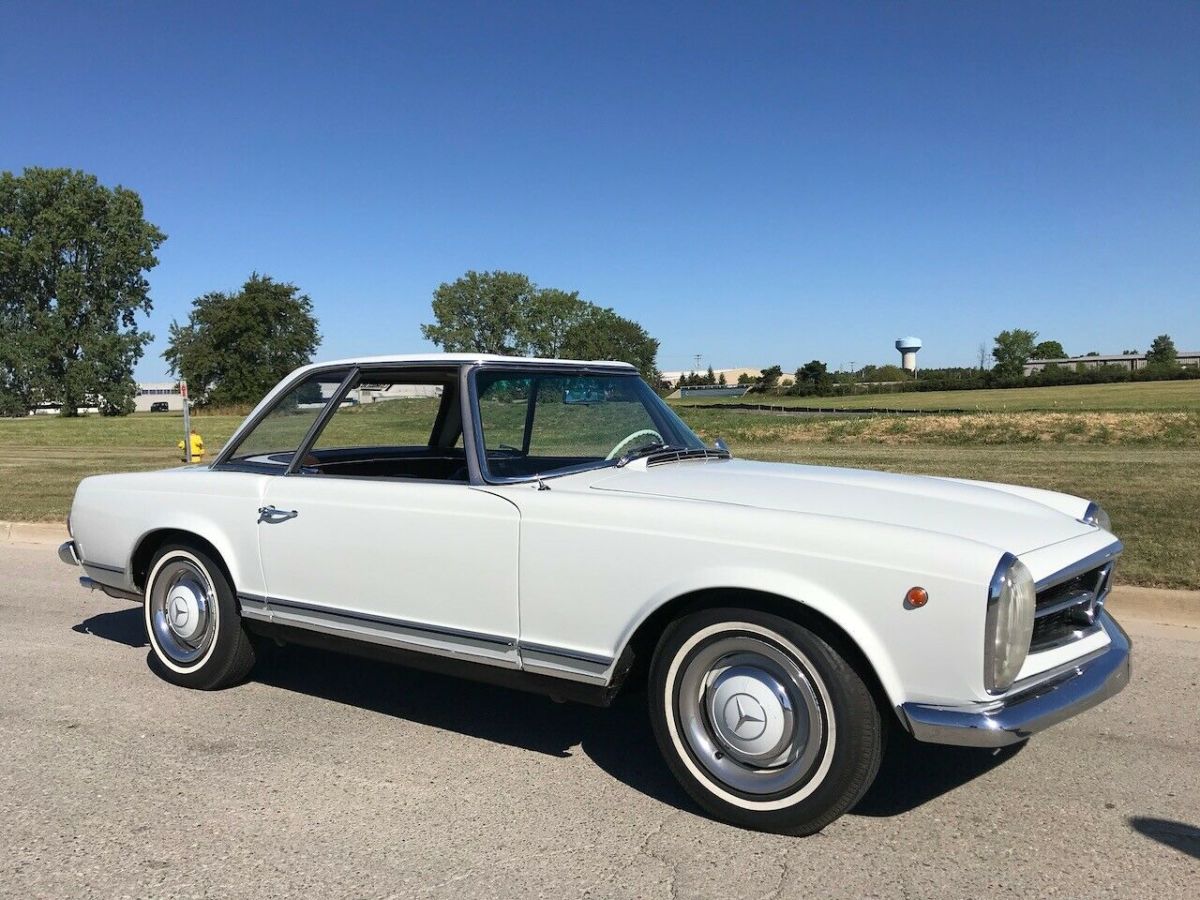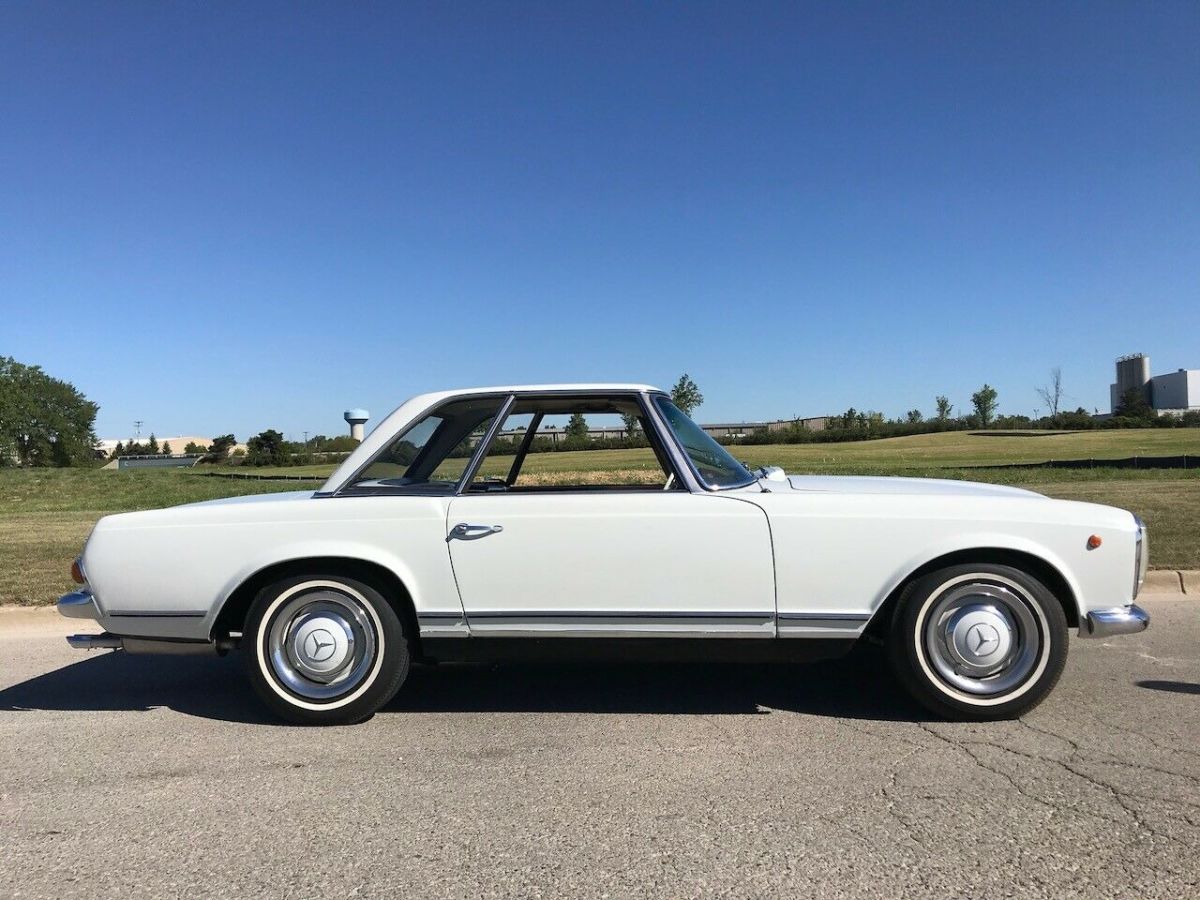1966 Mercedes 230SL Pagoda
Technical specifications of Mercedes-Benz 200-Series 1966
| Price: | US $59,000.00 |
|---|---|
| Item location: | Grand Rapids, Michigan, United States |
| Make: | Mercedes-Benz |
| Model: | 200-Series |
| Year: | 1966 |
| Mileage: | 69605 |
| VIN: | 10-015129 |
| Vehicle Title: | Clean |
| You are interested? | Contact the seller! |
Description
Nice condition 1966 Mercedes. Little rust in the truck, Upholstery solid with some wear. Chrome is potting a little with a little tarnish. Overall a very solid, nice, well running car.Production of the 230 SL commenced in June 1963 and ended on 5 January 1967. Its chassis was based on the W 111 sedan platform, with a reduced wheelbase by 30 cm (11.8 in), recirculating ball steering (with optional power steering), double wishbone front suspension and an independent single-joint, low-pivot swing rear-axle with transverse compensator spring. The dual-circuit brake system had front disc brakes and power-assisted rear drum brakes.[5] The 230 SL was offered with a 4-speed manual transmission, or an optional, very responsive fluid coupled (no torque converter) 4-speed automatic transmission, which was popular for US models. From May 1966, the ZF S5-20 5-speed manual transmission was available as an additional option, which was particularly popular in Italy. Of the 19,831 230 SLs produced, less than a quarter were sold in the US. The 2,308 cc (2.3 L) M127.II inline-six engine with 150 PS (110 kW; 148 hp) and 196 N_m (145 lb_ft) torque was based on Mercedes-Benz' venerable M180 inline-six with four main bearings and mechanical Bosch multi-port fuel injection. Mercedes-Benz made a number of modifications to boost its power, including increasing displacement from 2,197 cc (2.2 L), and using a completely new cylinder head with a higher compression ratio (9.3 vs. 8.7), enlarged valves and a modified camshaft. A fuel injection pump with six plungers instead of two was fitted, which allowed placing the nozzles in the cylinder head and "shooting" the fuel through the intake manifold and open valves directly into the combustion chambers.[6] An optional oil-water heat exchanger was also available. Mercedes-Benz Chief Engineer Rudolf Uhlenhaut demonstrated the capabilities of the 230 SL on the tight three-quarter mile Annemasse VŽtraz-Monthoux race track in 1963, where he put up a best lap time of 47.5 seconds vs. 47.3 seconds by Grand Prix driver Mike Parkes on his 3-liter V12 Ferrari 250 GT.[7] A brief chronology of the most notable changes made to the 230 SL:[8] 10/1963: First 230 SL with automatic transmission. 09/1964: Spare tire well removed, tire mounted horizontally. 11/1964: Optional tinted/thermal glass and new soft-top with steel bows (distinguished by missing chrome trim on the outer trailing edge).[9] 04/1964: US models with radio Becker Europa TR instead of Europa TG. 08/1965: Some harmonization with new W 108/W 109 sedans, incl. new floor panels, combined brake and clutch fluid reservoir, boot light and interior changes. US models with hazard lights. 03/1966: Mounts for three-point seat belts added. 05/1966: Optional ZF 5-speed manual transmission; rare and now very desirable. - SOURCED FROM WIKIPEDIA.


